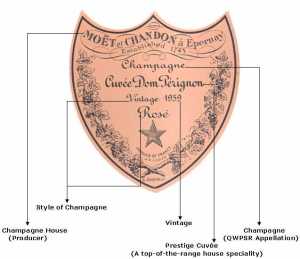Moët & Chandon will be lowering the dosage of its market-leading Brut Impérial from 12 grams per litre to 9 g/l according to its chef de cave Benoît Gouez. This follows the decision by Dom Pérignon’s chef de cave Richard Geoffroy, who recently gradually lowered the sugar levels on the prestige cuvée champagnes. Geoffroy said, “There has been a strategy of lowering the dosage in the last 10 years and we are now between 6 and 7 g/l.” This decision by the biggest brand in the region follows a global trend towards adding less sugar to the world-famous fizz. Partly explaining this development is kinder weather in Champagne, giving riper and more complex fruit with less reliance on a conventional dosage of between 10-12 g/l. Michael Edwards from Drinks Business states “Even climate change skeptics cannot deny that, since 1990, harvests have progressively begun two to three weeks earlier than in the ’70s and ’80s – in better-tended, eco-friendly vineyards, under warmer autumnal skies.” As for the right level of sugar, opinions vary, but a balance appears to have been struck between 6-8 g/l, ensuring there is enough sugar to enhance the Champagne’s aromas but also protect the wine from premature oxidation. (this is an important statement as sugar helps the wine from premature oxidation. Philippe Thieffry, senior winemaker at Veuve Clicquot, says “If the Champagne has a moderate dosage – 6-8 g/l – and is well protected by SO2, it will release the same bouquet as one traditionally dosed at 10-12 g/l; it will not suffer oxidation.” Below 6-8 g/l however, and Jean-Baptiste Lécaillon, vice-president at Louis Roederer, says “you reach an oxidative stage that quickly changes the fruit and aromas of the wine.”
Tag: Moët et Chandon
HOW TO READ A CHAMPAGNE LABEL
Champagne labeling laws differ from other parts of France because the entire region falls under a single AOP, the protected term ‘Champagne’ and the wines are categorized according to styles rather than designations. Here the status of the producer is more important than the vineyard sites.
To distinguish between the numerous different styles, Champagne labels use a range of terms as described below.
* Level of sweetness:
o Ultra Brut – Bone dry or very dry
o Brut – Dry
o Sec – Literally dry but has higher sugar level than Brut
o Demi-sec – Medium dry
o Doux – Sweet
* Non-vintage: A Champagne made from a blend of wines from different years.
Some Champagne houses may use up to hundred reserve wines from previous years to produce a consistent house style.
* Vintage: A champagne made from a single year’s harvest. The label must show the year of the harvest.
* Blanc de Blancs: This term on the label means that the Champagne has been produced entirely from white grapes, in other words, Chardonnay.
* Blanc de Noirs: Refers to Champagne made from black grape varieties (Pinot Noir and Pinot Meunier).
* Rosé: This is often made by blending a little red wine with whites.
* Grande Marque: Means ‘Great Brand’. A producer may use this term but according to AOP rules does not guarantee quality or any style.
* Cuvée de Prestige: These are the top-of-the-range releases from the Champagne houses and may come with a vintage on the label. Some examples include ‘Dom Pérignon’ from Moët et Chandon, ‘Cristal’ from Louis Roederer and ‘La Grande Dame’ from Veuve Clicquot Ponsardin.
* Marque d’Acheteur: Means ‘Buyer’s Own Brand’. These are often seen on Champagnes sold within a retail or supermarket chain that sells them using their own brand name.
Apart from these there are other non-mandatory terms that may appear on the label that specify type of Champagne producers, maturation time etc. 
wine-searcher.com

